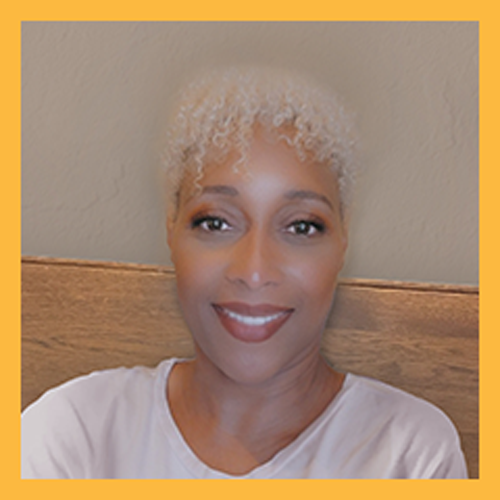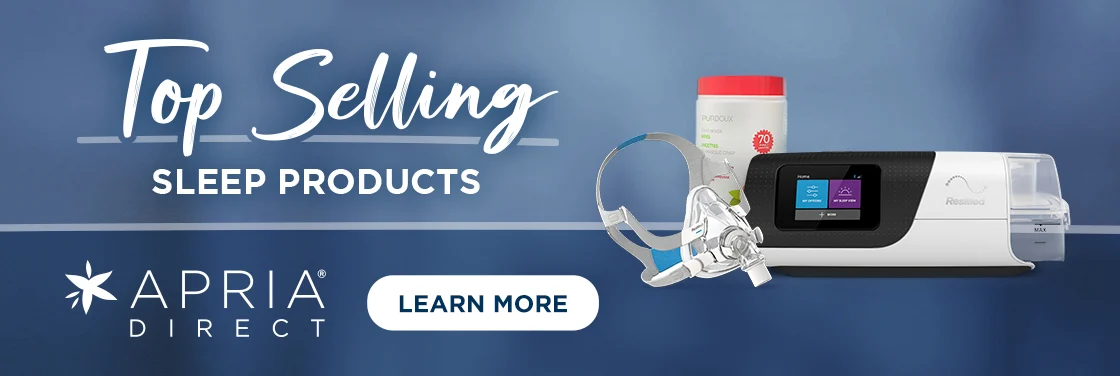ASK APRIA
Today's Clinician

Thelma Brooks
Thelma has been a respiratory therapist for 25 years and has been helping respiratory & CPAP patients at Apria for 14 years. When she's not working, Thelma loves spending her time with family and friends, traveling, and shopping.
CPAP
Q. My mask makes a gurgling noise when I breathe, and when I look at the tubing there’s water sitting in the tube, how do I fix that?
A. The gurgling noise that you hear and water sitting in the tubing is because there is extra condensation in the tubing from your humidifier. The humidifier setting is too high for the temperature in the room, meaning, inside the tubing is warmer than the room temperature causing extra condensation. I recommend reducing the humidifier setting, or another option is to add heated tubing, but be aware that heated tubing will need a prescription. Another thing to make sure is that your CPAP is lower than your head, that way gravity can stop the water from moving down the hose toward your mask.
For more information: How to Avoid CPAP Rainout
Q. I’m having a hard time exhaling when using my CPAP, how do I get over this?
A. Difficulty exhaling against positive airway pressure at first is very common for people. Most patients will adjust after using the device for a little while, but for some it may take more time or adjustments to the device’s comfort setting. For adjusting the device, CPAPs offer an exhalation relief setting that can be turned on or off on the device to provide relief when you exhale. This means that the pressure is decreased during exhalation, making the exhalation process more comfortable. Common terms for this setting are EPR, CFLEX and reslex, depending on the manufacturer.
Q. When I wake up my nose feels raw on the inside. I have a humidifier, what can I use to make my nose not so dry?
A. Using a CPAP can cause both mouth and nose dryness, but humidifiers should help. Heated humidifiers have different settings to provide more or less humidity, so increasing the settings to deliver more moisture is what I would recommend to try first. Heated tubing can also be prescribed by the physician, this will help keep the temperature and moisture consistent as the air travels up the tubing. The last suggestion would be if a nasal mask is being used. You can discuss the full-face option with one of our respiratory therapists (or your physician if a new prescription is needed to change the mask).
For more information: CPAP leaving you dry?
Q. I am repeatedly awakened by mask leaks throughout the night. I got a new mask which helped for a bit but it still leaks. What will stop all the mask leaks?
A. Mask leaks are common with CPAP therapy and can occur for many reasons, e.g., wrong size, cushion is worn out (old), or not cleaning the mask cushion. Your mask can also leak due to your sleeping position or from high air flow pressures. Even more, several masks on the market have multiple sizes inside the box/bag, so using the sizing guide will ensure you're using the correct mask size for your face. I recommend contacting your local branch to talk with a respiratory therapist. They can see how you're putting the mask on and make sure the placement is correct, whether or not you need a new size, or discuss any other issues that may be contributing to your mask leaks.
For more information: Reasons Why Your CPAP Mask Leaks; Make Sure You Have the Right CPAP Mask for Your Sleeping Position
Do you have a question for our Respiratory Therapists to be answered in a future email?
We want to hear from you!


